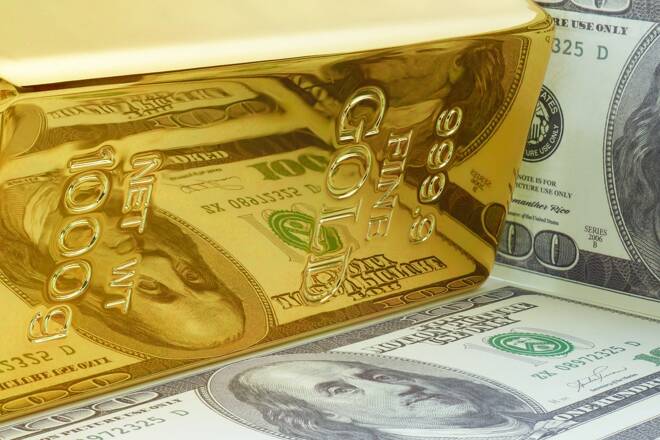Advertisement
Advertisement
Price of Gold Fundamental Daily Forecast – Headline Inflation Expected to Ease, Core Inflation Elevated
By:
If inflation comes in higher than expected then combined with the strong July labor market report, the odds of a supersized rate hike will go up.
Gold futures are inching lower early Wednesday shortly before the release of the key U.S. consumer inflation report at 12:30 GMT.
Although traders are expecting the report to show headline inflation eased in July, so-called core inflation is expected to continue to run hot. Nonetheless, the Fed is widely expected to continue to raise rates aggressively with a super-sized 75 basis-point rate hike in the cards for September.
At 06:02 GMT, December Comex gold futures are trading $1804.40, down $7.90 or -0.44%. On Tuesday, the SPDR Gold Shares ETF (GLD) settled at $167.18, up $0.49 or +0.29%.
Headline Inflation to Dip, Core Inflation Steady-to-Higher
Economists expect July’s consumer price index rose 0.2%, down from 1.3% in June, according to Dow Jones. Year-over-year, the pace of consumer inflation in July is expected to fall to 8.7%, down from 9.1%.
Excluding energy and food, CPI is expected to rise by 0.5% in July as rents and service prices rose, but that is down from 0.7% in June. Core CPI is still expected to be higher than June on a year-over-year basis, gaining 6.1% from June’s 5.9%.
Inflation Expectations Decline
Ahead of the CPI report, a survey from the New York Federal Reserve showed that consumers expected inflation to run at a 6.2% pace over the next year and a 3.2% annual rate for the next three years. That is a big decline from the respective 6.8% and 3.6% results in a June survey.
This may not affect gold prices over the short-run, but it’s something to monitor because not only are gold traders focused on rate hikes, but also when the Fed will stop raising rates and when it could cut rates.
Oil, Gasoline Prices Could Keep Inflation Elevated
Although falling gasoline prices are being credited with slowing the pace of inflation in July, oil and gasoline prices remain the wildcard. The price of both is highly dependent on geopolitical events and how much the global economy slows.
While the outlook for lower demand is said to be putting pressure on crude oil prices at this time, prices could turn higher quickly if there is a major supply disruption. This could reverse the softening trend is consumer inflation.
The Fed may have more control over the factors that drive demand, but it doesn’t over supply.
Short-Term Outlook
Gold prices have remained elevated since the Fed made its last rate hike on July 27. With the Fed expected to continue its front-loaded interest rate hiking spree in September, it’s hard to find a reason for a prolonged rally in gold.
If inflation comes in higher than expected then combined with the strong July labor market report, the odds of a supersized rate hike by the Fed will go up. More importantly, rate cut expectations for next year could disappear. This would be bearish for gold prices.
For a look at all of today’s economic events, check out our economic calendar.
About the Author
James Hyerczykauthor
James Hyerczyk is a U.S. based seasoned technical analyst and educator with over 40 years of experience in market analysis and trading, specializing in chart patterns and price movement. He is the author of two books on technical analysis and has a background in both futures and stock markets.
Advertisement
